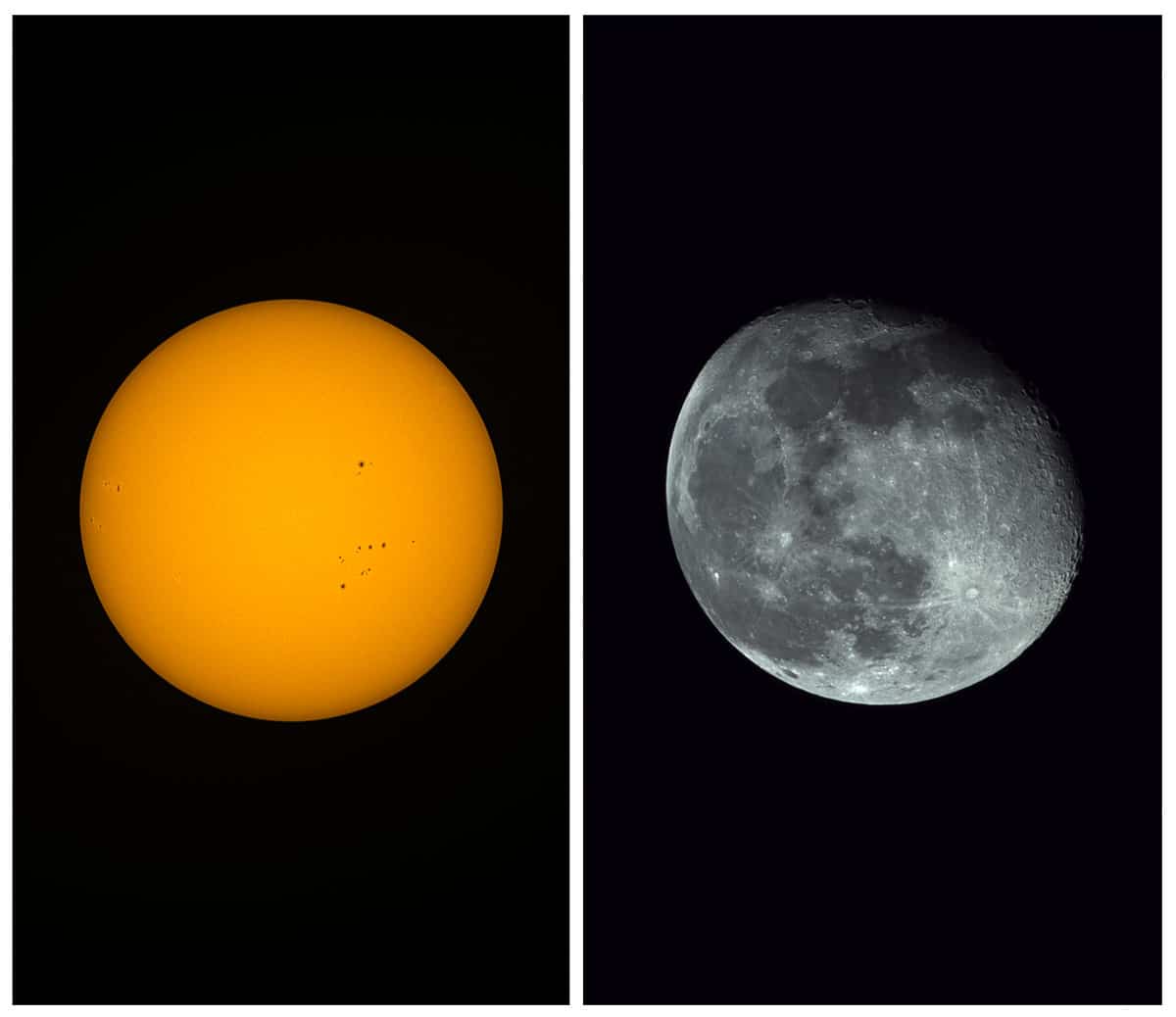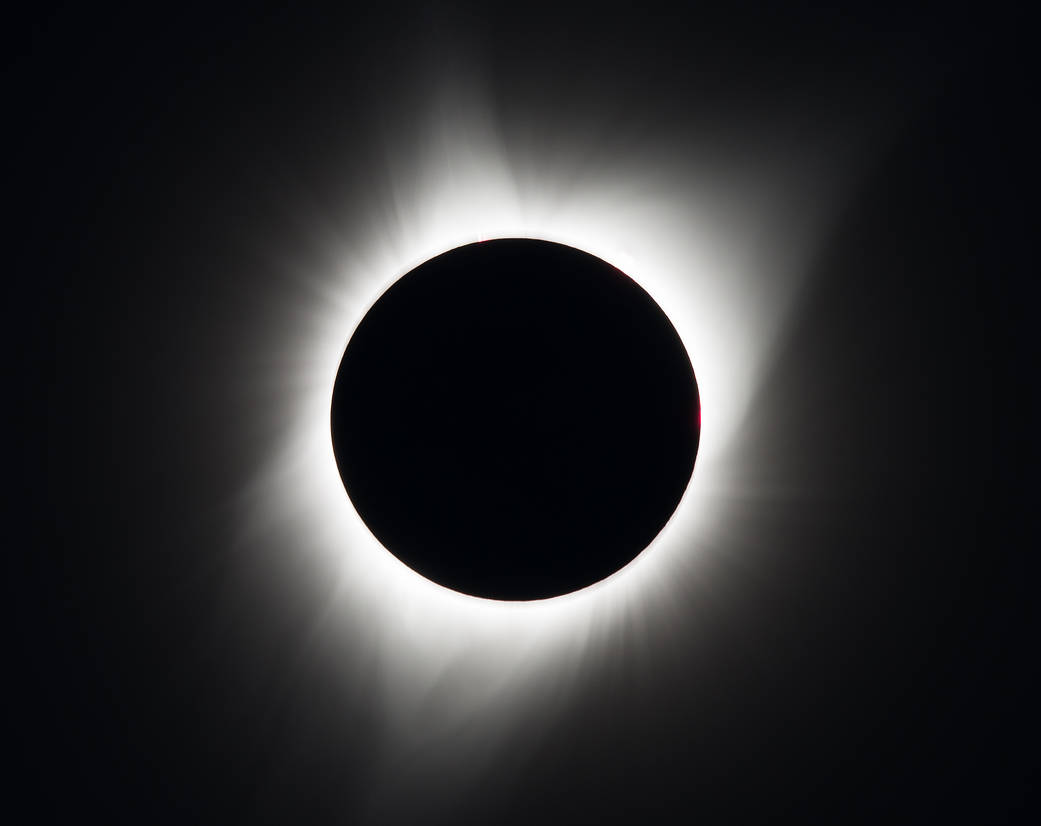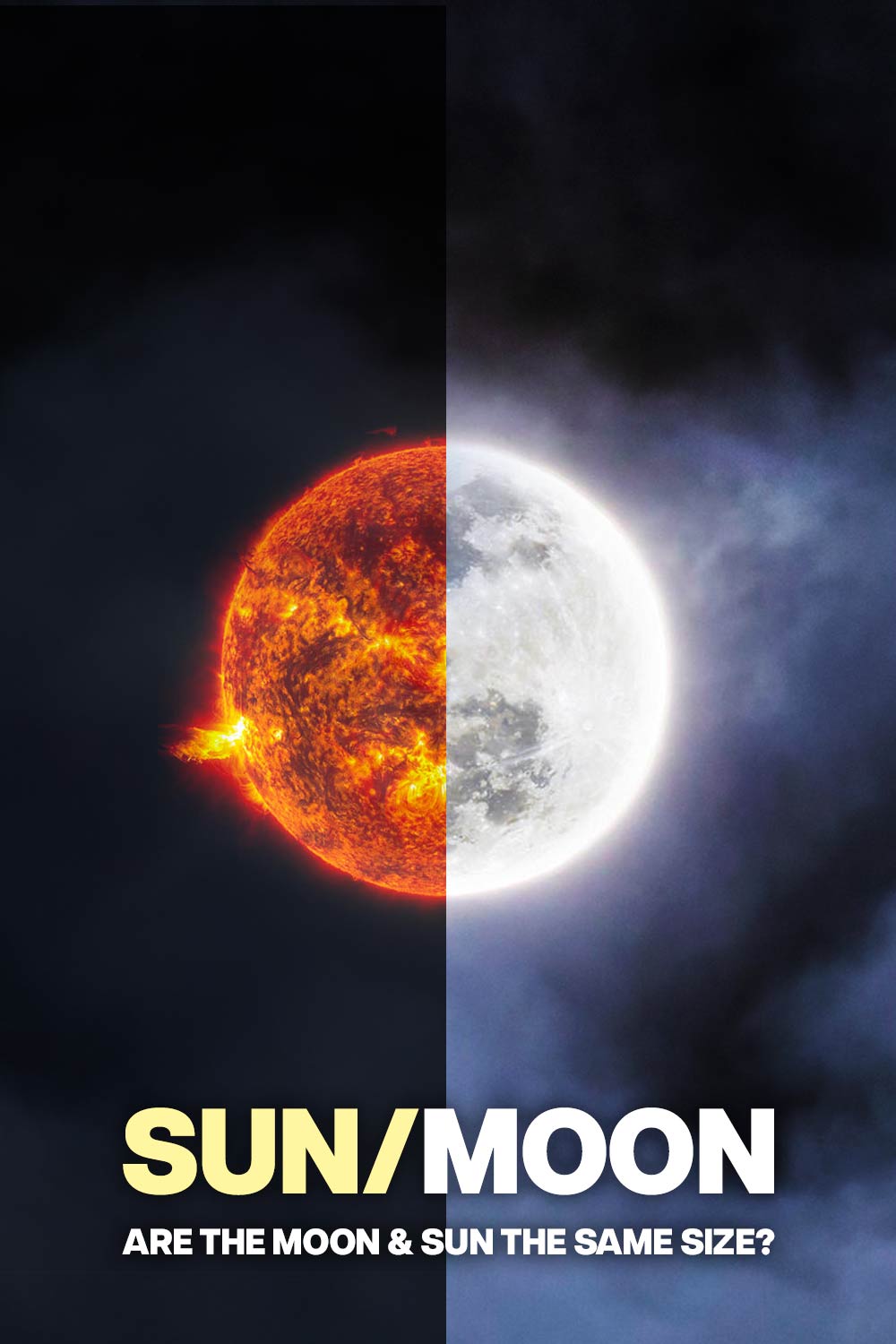Are the Sun and Moon the Same Size?
The sun and moon are two objects in our solar system that have a lot of influence over Earth. And given the prevalence of these objects in our sky, it has left many wondering if the sun and moon are the same size – because it sure looks like they are.
The short answer is no, the sun and moon are not the same size but that doesn’t explain why it looks that way.
Their seemingly similar size just happens to be a strange coincidence. The moon and sun have the same angular size in the sky, despite their size differences.
The Sun and Moon photographed using the same focal length (250mm) on the Seestar S50 smart telescope.
Sun and Moon Size Differences
The sun’s diameter is 864,000 miles, which is approximately 400 times larger than the moon, at only 2,160 miles. Given these numbers, you would assume that the sun would appear enormous, in comparison with the moon, so why doesn’t it? That’s because the sun also happens to be 400 times further away from Earth than the moon.
This ‘match’ of size difference and distance, is the reason that the sun and moon appear to be the same size from Earth. It is also the reason that we are able to observe amazing celestial events, such as a solar eclipse.
This phenomenon involves the Moon passing between Earth and the sun, casting a shadow over Earth by blocking the sun. This happens when the sun and moon orbital planes intersect and the distances align, which happens about every 18 months.
What are the odds?
The moon formed approximately 4.5 billion years ago, born out of a collision between Earth and Theia. Since its formation, it has been slowly inching away from Earth each year.
Full Moon through a telescope
At this time, the moon is the perfect distance to appear the same size as the sun and block it out during an eclipse. As time passes, the moon will continue to get further away from Earth.
It would be difficult to calculate the odds of the size differences of these objects aligning to the point where solar eclipses are possible. Millions of years from now, only annular or partial eclipses will be observable from Earth.
A partial solar eclipse occuring at sunrise on June 10, 2021.
According to mathematical astronomer Myles Standish, in the field of solar system dynamics and celestial mechanics, “the similarity among the planets and moons that make up our solar system is unique and doesn’t occur with any other planets and moons in our immediate neighborhood of space”.
Solar Eclipses
Though there are four different types of solar eclipses, none are more spectacular than a total solar eclipse. As mentioned above, the fact that we are alive during a time when we are able to witness this celestial event is pretty incredible.
A total solar eclipse is where the moon casts its umbra (or shadow) on Earth’s surface. Those on Earth who are positioned in the direct path of the umbra will see the sun backlighting the moon. During this brief time, the sun is completely covered and we see the outer atmosphere of the sun (i.e. the corona).
Photo Credit: NASA/Aubrey Gemignani




